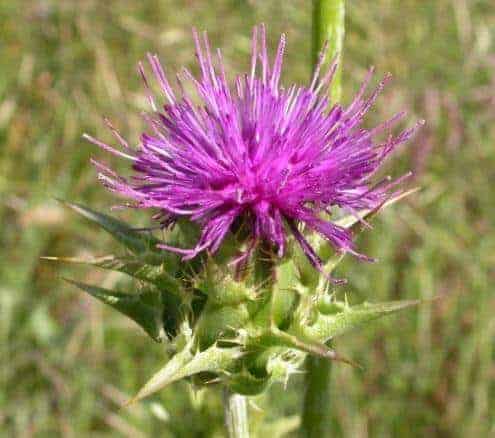Cushing Disease, not to be confused with Cushing’s Syndrome, is caused by a tumour in the pituitary gland in the brain. The tumour secrets increased amounts of the stress hormone adrenocorticotropin (ACTH) followed by cortisol release from the adrenal glands leading to rapid weight gain, elevated blood pressure and muscular weakness. Patients are prone to osteoporosis, infections and may show cognitive dysfunction or even depression. In 80 to 85 % of the patients the tumour can be removed by uncomfortable brain surgery. For inoperable cases, there is currently only one targeted therapy approved which unfortunately causes intense side effects such as hyperglycemia in more than 20 % of the patients.
Scientists around Günter Stalla, endocrinologist at the Max Planck Institute of Psychiatry in Munich, now discovered in cell cultures, animal models and human tumour tissue that a harmless plant extract can be applied to treat Cushing Disease. “Silibinin is the major active constituent of milk thistle seeds. It has an outstanding safety profile in humans and is already used for the treatment of liver disease and poisoning,” explains Marcelo Paez-Pereda, leading scientist of the current study published in the renowned scientific journal Nature Medicine. After silibinin treatment, tumour cells resumed normal ACTH production, tumour growth slowed down and symptoms of Cushing Disease disappeared in mice.
In 2013, the Max Planck scientists filed a patent on a broad family of chemical and natural compounds, including silibinin, to treat pituitary tumours. Compared to humans, of which only 5.5 in 100,000 people worldwide develop Cushing Disease, this condition is very common in several pets. For example, 4 % of dogs and even 7 % of horses suffer from Cushing Disease. Thus, the researchers now plan to test special formulations with a very pure substance and slow release of the active component silibinin in clinical trials.
Silibinin: Mode of action
“We knew that Cushing Disease is caused by the release of too much ACTH. So we asked ourselves what causes this over production and how to stop it,” says Paez-Pereda. In their first experiments the researchers found tremendously high amounts of the heat shock protein 90 (HSP90) in tumour tissue from patients with Cushing Disease. In normal amounts HSP90 helps to correctly fold another protein, the glucocorticoid receptor which in turn inhibits the production of ACTH. “As there are too many HSP90 molecules in the tumour tissue, they stick to the glucocorticoid receptor,” explains Paez-Pereda. “We found that silibinin binds to HSP90 thus allowing glucocorticoid receptor molecules to dissolve from HSP90. With silibinin we might have discovered a non-invasive treatment strategy not only for the rare Cushing Disease but also for other conditions with the involvement of glucocorticoid receptors such as lung tumours, acute lymphoblastic leukaemia or multiple myeloma,” concludes Paez-Pereda.


